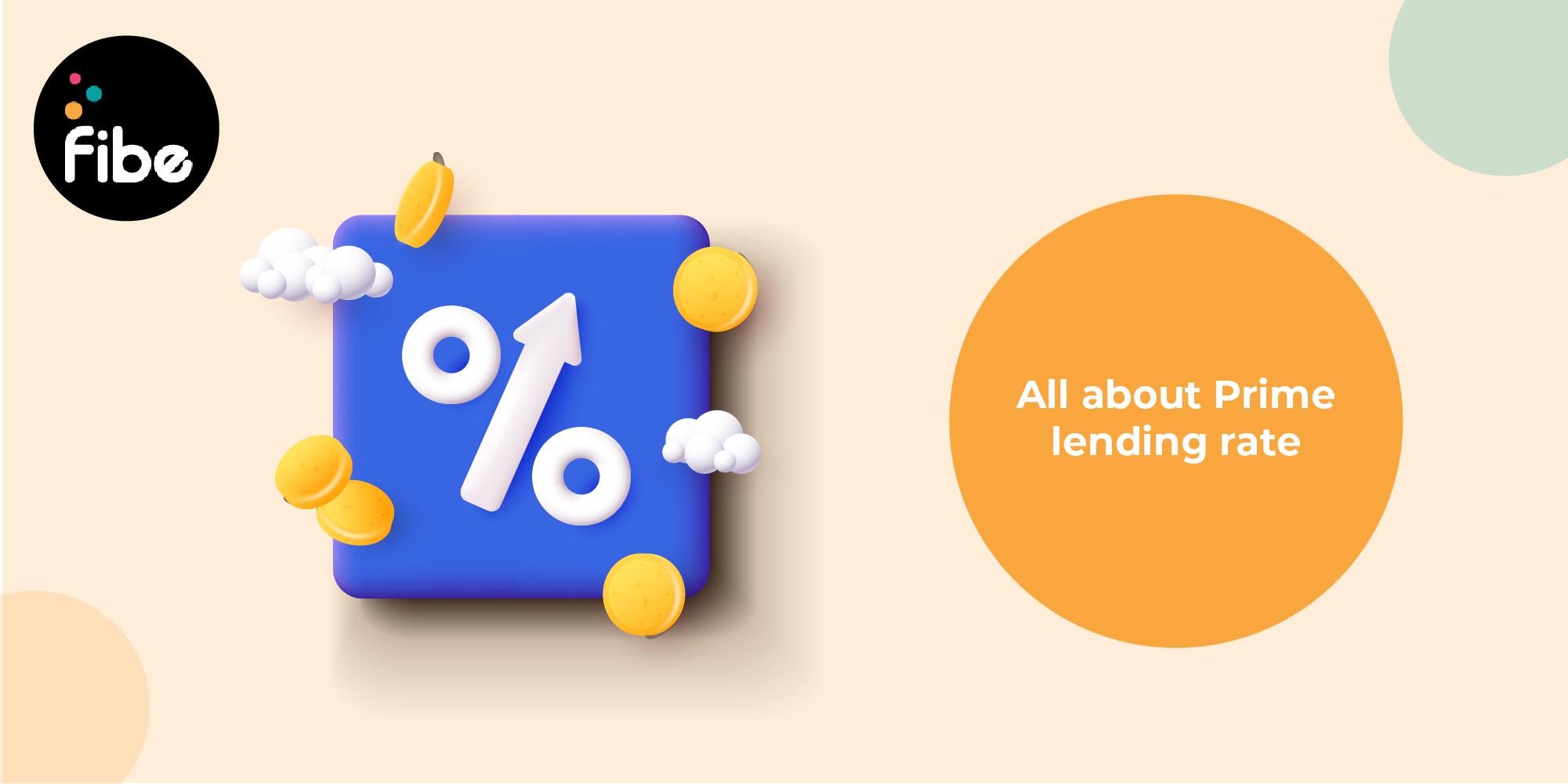- Home
- Blogs
- Personal Loan
- What Is Prime Lending Rate
Prime Lending Rate – Learn Definition, Differences and Factors
- Updated on: 18 Jul 2024

Knowing the current prime rates or prime lending rates is important if you plan to apply for a loan. This is the interest rate that financial institutions charge borrowers with high creditworthiness. The prime rate impacts the interest rate on credit cards, home loans and other types of credit you plan to take.
Read on to learn what is prime lending rate, how it works and more.
Banks and NBFCs offer the prime lending rate to their most creditworthy customers. Prime rates are decided by lenders based on internal policies and external factors, such as market volatility and economic fluctuations. This rate helps compensate for the lending risk incurred by them.
Note that the prime lending rate does not directly affect your borrowing costs but acts as a baseline. Financial institutions add a certain spread to this rate based on who the borrower is, the type of loan, and more.
Since 2010, the base rate scheme has replaced the benchmark prime lending rate or BPLR system as per the mandate of the RBI. This was also replaced by the marginal cost of funds-based lending rate and today, lenders use an external benchmark such as the repo rate.
This was done to ensure transparency on changes in floating interest rates and to ensure that borrowers could get the benefit of lower rates quickly.
Also Read: Interest Rates on Personal Loans
Financial institutions consider borrowers with high creditworthiness as less risky. Since the risk of default is lower, lenders offer lower interest rates to creditworthy borrowers.
Lenders assess your creditworthiness based on the following parameters:
When your profile is deemed highly creditworthy, you can get loans at prime lending rates, which are the lowest rates at which financial companies can offer credit.
Apply For Instant Cash Loan Online
Prime lending rates and variable interest rates are important concepts affecting your borrowing costs. As mentioned, the prime rate is the interest rate that lenders offer to customers with high creditworthiness. On the other hand, variable or floating rates refer to those rates which
can fluctuate during the course of a loan’s tenure.
The lending institution’s internal policies define the exact value of these interest rates. These rates apply to all branches of the financial institution nationwide. Variable interest rates can change with economic fluctuations. Lenders can also change the variable interest rates based on their revised internal policies.
Lenders charge a higher variable interest rate when the prime lending rate increases. This increases the monthly repayment amount on loans with fluctuating interest rates. Similarly, lenders reduce the variable interest rates if the prime rate decreases. This reduces your borrowing costs since your interest outgo decreases.
Now that you know the prime lending rate meaning, here are the effects of the prime rate on borrowers taking different types of loans.
Your home loan interest rate appreciates when the prime rate increases. Due to this increase, your overall cost of borrowing will also rise.
The same logic applies to business loans. When prime lending rates decrease, you can access business financing at affordable costs.
Your credit card interest rate will also change with variations in the prime lending rate. An increase in the prime rate will ultimately lead to an increase in the credit card interest rate.
Understanding how interest rates are set and calculated will help you borrow smartly. Today, most financial companies set rates based on external benchmark rates and keeping an eye on them is a wise move as a borrower.
To apply for affordable credit without any collateral, consider Fibe. With the Fibe Instant Personal Loan, you can get up to ₹5 lakhs in minutes. Download our Personal Loan App or register on our website to apply in minutes!
The Indian prime lending rate as of 15th September 2023 is 14.95% p.a.
The prime lending rate is the rate commercial banks charge for loans from borrowers with high creditworthiness. The lending rate is the interest rate that financial institutions normally charge for loans.
Say a bank provides personal loans at an interest rate of 18% to its regular customers. To a creditworthy borrower, it may offer a loan at a lower rate of 16%, which may be referred to as the prime lending rate.